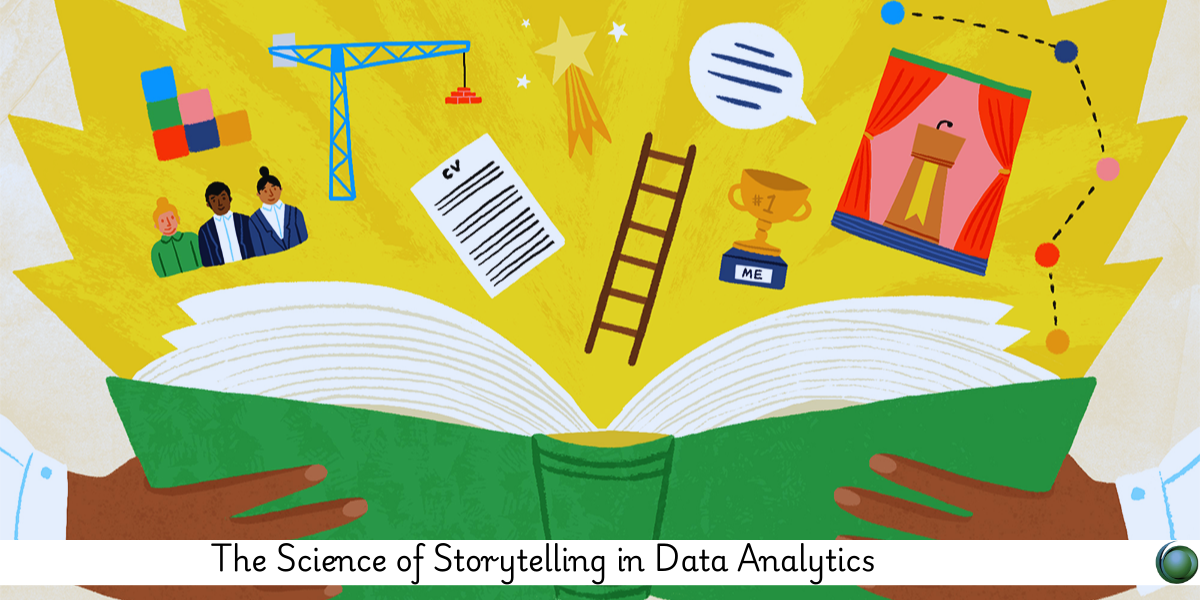Description
Introduction
Data analytics reveals patterns and insights, but without storytelling, these insights often go unnoticed or misunderstood. This course explores the science behind effective storytelling in data analytics, combining cognitive psychology, communication strategy, and visual best practices. You’ll learn how to turn raw numbers into narratives that are not only clear and engaging but also drive impact and decisions.
Prerequisites
-
Basic knowledge of data analysis and visualization
-
Experience with Excel, Tableau, or similar tools
-
Interest in communication, design, or public speaking
Table of Contents
1. Foundations of Storytelling in Analytics
1.1 Why Storytelling Matters in Data Science
1.2 Cognitive Science of How Humans Process Data
1.3 The Storytelling Brain: Memory, Emotion & Pattern
1.4 Storytelling vs. Reporting: Key Differences
2. Elements of an Effective Data Story
2.1 Characters, Conflict, and Resolution in Data
2.2 Context and Relevance for Your Audience
2.3 The Role of Insight: Beyond Numbers
2.4 Message Discipline: One Story, One Point
3. Structuring the Narrative
3.1 Classic Frameworks: Hero’s Journey, ABT (And-But-Therefore)
3.2 Data Story Arcs: From Discovery to Recommendation
3.3 Crafting Hooks and Strong Conclusions
3.4 Ensuring Logical Flow in Analytics Presentations
4. Designing Visual Stories
4.1 Visual Cognition: What Our Eyes and Brain Prefer
4.2 Choosing the Right Chart for the Right Insight
4.3 Visual Hierarchy and Emphasis
4.4 The Role of Color, Typography, and Layout
5. Tailoring to Your Audience
5.1 Knowing Executive vs. Technical Audiences
5.2 Framing Data for Decision-Making
5.3 Cultural and Domain-Specific Considerations
5.4 Telling Stories with Multiple Data Sources
6. Tools and Technologies
6.1 Data Storyboarding with Tableau and Power BI
6.2 Using Canva, Flourish, and Datawrapper for Narrative
6.3 Python & R for Narrative Visualizations
6.4 Automation and Dynamic Storytelling
7. Emotional and Ethical Considerations
7.1 The Role of Emotion in Data Interpretation
7.2 Avoiding Manipulation and Bias
7.3 Ensuring Transparency and Accuracy
7.4 Ethics of Predictive and Behavioral Data Stories
8. Case Studies and Real-World Examples
8.1 Corporate Dashboards that Tell a Story
8.2 Data Journalism Success Stories
8.3 Government Reports that Changed Policy
8.4 Healthcare Data Used for Public Good
8.5 Marketing Insights that Drove Results
9. Capstone: Build Your Own Data Story
9.1 Selecting a Dataset with a Strong Narrative
9.2 Building a Storyboard and Flow
9.3 Designing Visuals with a Message
9.4 Presenting with Impact
9.5 Peer Review and Final Iteration
In a world overflowing with data, the ability to tell scientific, structured, and emotionally intelligent stories is what separates insight from action. By understanding the science behind storytelling and applying it to your data work, you’ll become a more persuasive communicator and trusted analyst—one who doesn’t just crunch numbers, but moves people.







Reviews
There are no reviews yet.